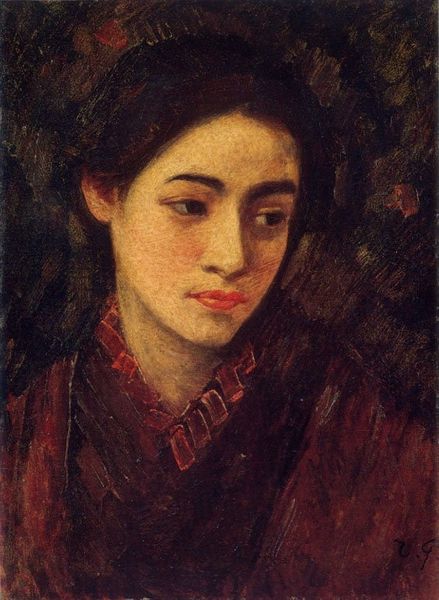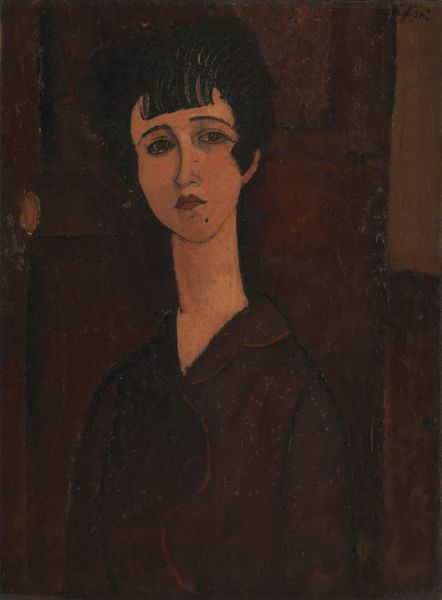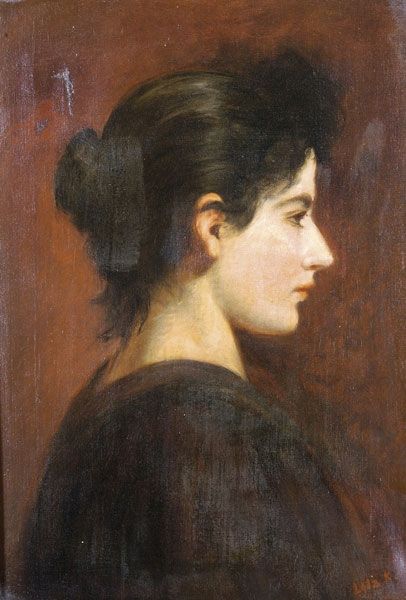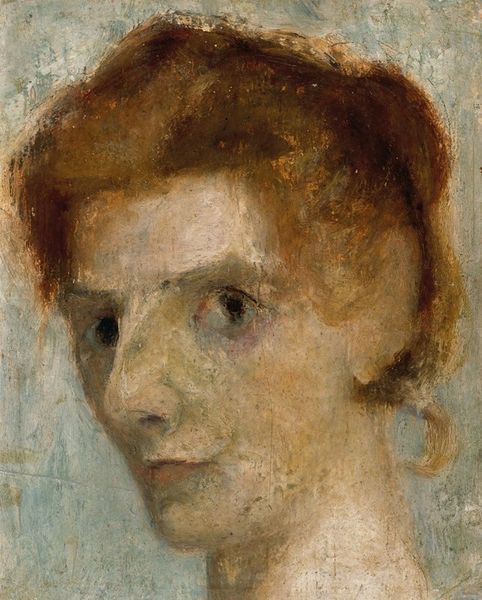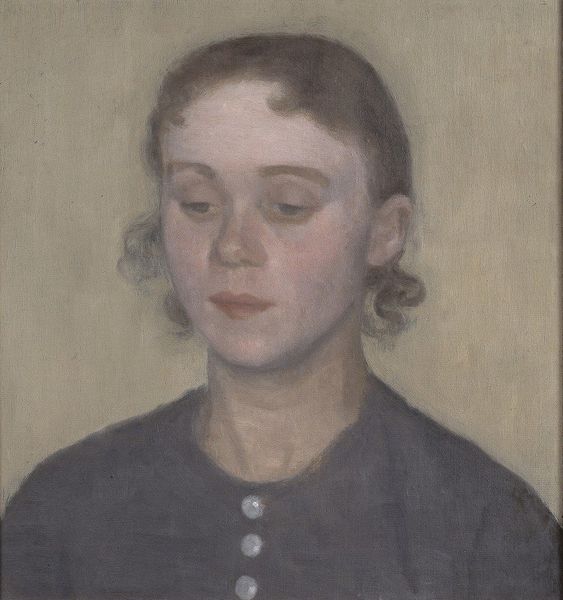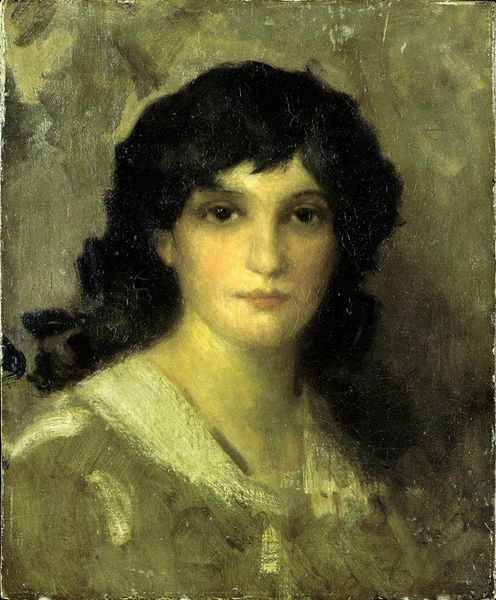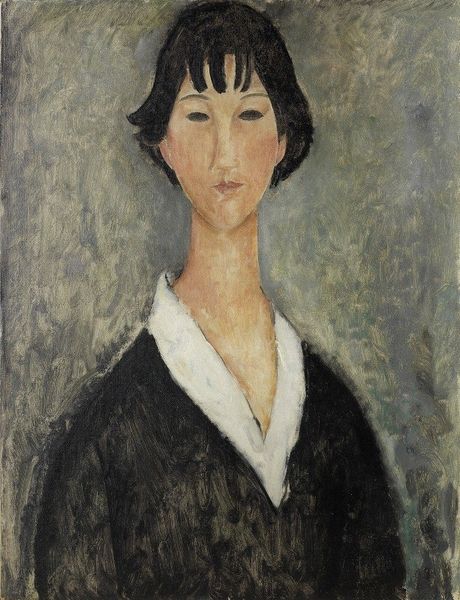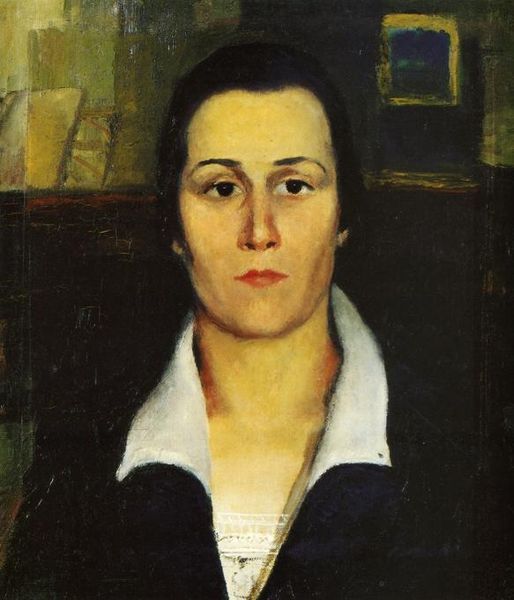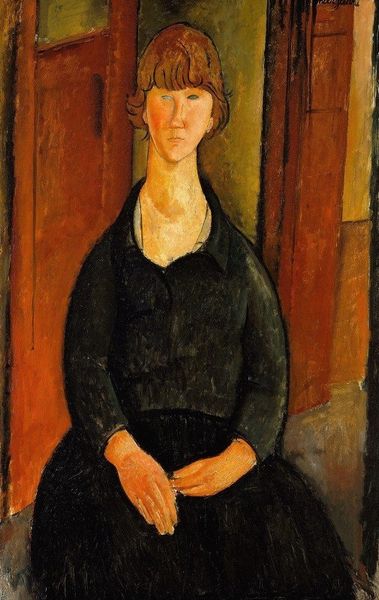
Copyright: Public Domain: Artvee
Arnold Böcklin painted this portrait of his eldest daughter, Clara Bruckmann-Böcklin, using oil on canvas. The paint has been applied in layers of varying thickness, creating both smooth and textured surfaces, like the way the pigment clumps to create the impression of fabric on her sleeves. Böcklin was working at a time when industrialization was rapidly changing the art world. The rise of mass production and readily available materials had a profound impact on artmaking. While the artist still relied on traditional materials, his application of paint seems to nod to the changes in society, almost imbuing the portrait with the texture and feel of mass-produced textiles. The labor involved in creating a portrait like this is considerable. The artist had to prepare the canvas, mix his paints, and then patiently apply layer upon layer of color to achieve the final effect. This is a different kind of work than that of industrial production, but it is still work, and it's important to recognize the skill and effort that went into creating this piece. In the end, it bridges the gap between traditional art and the modern, industrialized world.
Comments
No comments
Be the first to comment and join the conversation on the ultimate creative platform.
